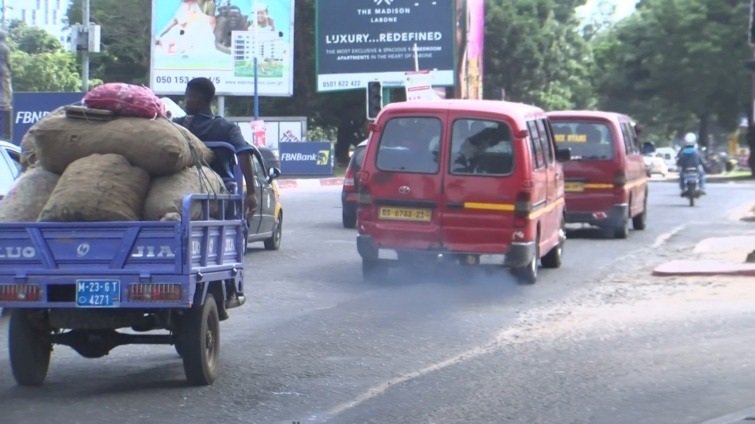
Air pollution was responsible for 7.9 million deaths in 2023, roughly one in every eight deaths worldwide, according to the latest State of Global Air Report 2025.
The report, produced by the Health Effects Institute in partnership with the Institute for Health Metrics and Evaluation (IHME) and the NCD Alliance, ranks air pollution as the second leading risk factor for early death globally, surpassed only by high blood pressure.
That figure, from the State of Global Air Report 2025, represents only a slight drop from the 8.1 million deaths recorded in 2021, underlining the slow pace of progress in tackling what experts describe as a “silent global epidemic.”

Across the world, 36% of people are breathing air dirtier than the World Health Organisation’s (WHO) least stringent air quality target of 35 micrograms per cubic metre (µg/m³).
And for nearly 2.6 billion people, the problem begins at home — from cooking with charcoal, wood, or other solid fuels that fill kitchens with toxic smoke.
The health toll is staggering: 95% of pollution-related deaths in adults over 60 are linked to non-communicable diseases such as heart disease, stroke, chronic lung conditions, dementia, and diabetes.
The report notes that air pollution now contributes to one in every two COPD deaths, one in four heart disease deaths, and over one in four dementia deaths globally.

Inequality in the Air
While pollution is a global threat, its burden is deeply unequal. Nearly 90% of all deaths from air pollution occur in low- and middle-income countries, where rapid urbanisation, reliance on biomass fuels, and limited regulation worsen air quality.
In 2023 alone, India and China each recorded more than two million air pollution-related deaths, while Bangladesh, Pakistan, and Nigeria each saw over 200,000.
Countries such as Indonesia, Myanmar, and Egypt also crossed the 100,000-death mark, highlighting how Asia and Africa remain the epicentres of the crisis.
Ghana’s Struggle with Dirty Air
Ghana’s data tells a troubling story. The report estimates more than 32,000 deaths in 2023 were linked to air pollution, with more than 5,900 of them children and young people under 20.
About 15% of Ghanaians live in areas exceeding the WHO’s interim PM2.5 target, and the country’s air pollution death rate (177 per 100,000) is ten times higher than that of high-income countries.
Even more striking, one in every three heart disease deaths in Ghana is attributable to air pollution. Experts warn that this combination of environmental and public health challenges could erode years of progress made in tackling noncommunicable diseases.
A Changing Climate, a Shrinking Window
Scientists say pollution and climate change are now twin crises feeding each other. Hotter temperatures intensify smog formation, while the burning of fossil fuels continues to drive both warming and ill health.
The report also notes a growing link between air pollution and dementia, which caused 626,000 deaths globally in 2023 and robbed people of 11.6 million healthy years of life.

Despite the grim numbers, the report points to signs of progress — particularly in China and South Asia, where cleaner energy transitions have helped cut household air pollution deaths by over 36% since 2000.
Yet, 11% of the world’s population still lives in countries with no national air quality standards.
2024 State of Global Air Report
For context, the 2024 State of Global Air Report found that air pollution remained the second leading risk factor for premature death worldwide, responsible for 8.1 million deaths that year.
Of these, 58% were linked to ambient PM2.5 exposure, 38% to household air pollution, and 6% to ozone pollution.
Children under five suffered particularly high mortality, with 709,000 deaths attributed to polluted air — the majority occurring in Asia and Africa.
The report highlighted significant regional inequalities, noting that people in low- and middle-income countries were exposed to 1.3 to 4 times higher levels of PM2.5 than those in wealthier nations.

While South Asia and Africa carried the heaviest burden of disease, countries such as China and India showed improvements due to declining household air pollution levels.
Since 2000, deaths from household air pollution have dropped by 36%, largely due to cleaner cooking technologies and fuels.
Despite these gains, global PM2.5 exposure in 2021 still averaged 31.3 µg/m³, far exceeding the WHO guideline of 10 µg/m³.
The report urged governments to tighten national air quality standards and accelerate clean energy transitions, warning that without stronger action, air pollution would continue to fuel noncommunicable diseases such as heart disease, COPD, and stroke, especially in developing regions.
Urgency and Action
Experts behind the report stress that air pollution is both preventable and solvable. Expanding access to clean energy, enforcing emission limits, investing in public transport, and developing early warning systems could save millions of lives.
But for countries like Ghana — where industrial emissions, traffic fumes, and open burning remain unchecked — the challenge is as much about financing adaptation as it is about political will.
Without urgent intervention, the next generation may inherit not just a warming planet, but one where every breath carries a risk.
This story was a collaboration with New Narratives. Funding was provided by the Clean Air Fund, which had no say in the story’s content.




